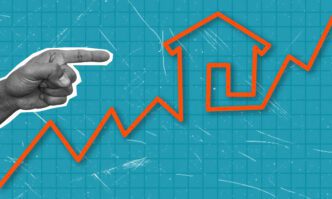Executive Summary
- The U.S. housing market is exhibiting a ‘K-shaped’ recovery, where existing homeowners leverage massive equity gains to purchase new properties.
- The market share of first-time homebuyers has fallen sharply to 21%, while their median age has increased to 40, according to the National Association of Realtors.
- Structural issues, including a lack of affordable supply and competition from investors, are creating a long-term bottleneck for entry-level buyers.
The U.S. housing market is increasingly mirroring the nation’s ‘K-shaped’ economic recovery, creating a stark divide where equity-rich repeat buyers thrive while first-time homebuyers are progressively shut out. Data from the National Association of Realtors (NAR) shows the market share for first-time purchasers has fallen to just 21%, a significant drop from previous years, as affordability challenges and competition from cash-flush buyers reshape the landscape.
An Economy of Haves and Have-Nots
Economists have pointed to a K-shaped recovery in the broader economy, with high-income earners maintaining strong spending habits while lower and middle-income households struggle with rising costs. This dynamic is now entrenched in the housing sector. Trillions of dollars in home equity, accrued during the pandemic due to stimulative Federal Reserve policies, have provided existing homeowners with a significant advantage, allowing them to bridge the affordability gap on their next purchase.
Federal Reserve Chair Jerome Powell has since conceded that the quantitative easing measures, which fueled demand amid a severe housing shortage, “could have and perhaps should have” ended sooner. This accumulated equity now acts as a primary tool for repeat buyers, further sidelining those trying to enter the market for the first time.
First-Time Buyers Face Mounting Hurdles
The challenges for aspiring homeowners are reflected in recent NAR data. The share of first-time buyers contracted sharply to 21% in June, a notable decrease from 32% in 2023 and the historical average of 40% seen before the 2008 financial crisis. The median age of a typical first-time homebuyer has climbed to 40, up from 35 in 2023. Furthermore, the median downpayment for this group has reached 10%, the highest level recorded since 1989.
These difficulties are compounded by broader economic pressures. While the unemployment rate has remained steady at around 4.3%, recent layoffs have targeted white-collar, services-oriented jobs—positions that historically offer strong homebuying potential. The unemployment rate for individuals aged 20 to 24 stood at 9.2% as of August, posing another significant barrier for young, early-career workers.
Policy and Market Responses
Addressing housing costs has become a political priority. In January, President Donald Trump signed an executive order directing federal agencies to find ways to “lower the cost of housing and expand housing supply.” However, persistent inflation remains a concern for the Federal Reserve, limiting the potential for significant interest rate cuts that could improve affordability.
According to Seth Sprague of Richey May, the market may be facing a sustained slide in homeownership rates. He noted that the “once in a lifetime appreciation may never occur again,” and that low mortgage rates from the pandemic era have also slowed the pace of sales by locking existing owners into their current homes. Meanwhile, Dash Robinson, president of Redwood Trust, believes the role of real estate investors will continue to grow in importance. “It’s been a structural shift over the past 10 or 15 years, and we expect that to continue,” Robinson stated.
A Structural Shift
As repeat buyers hold onto their homes for a record 11 years and investors increase their market presence, the bottleneck for first-time buyers is likely to worsen. This structural shift not only delays wealth creation for a new generation of homeowners but also has a ripple effect on the broader economy, impacting spending on goods and services that typically accompany a first home purchase.








